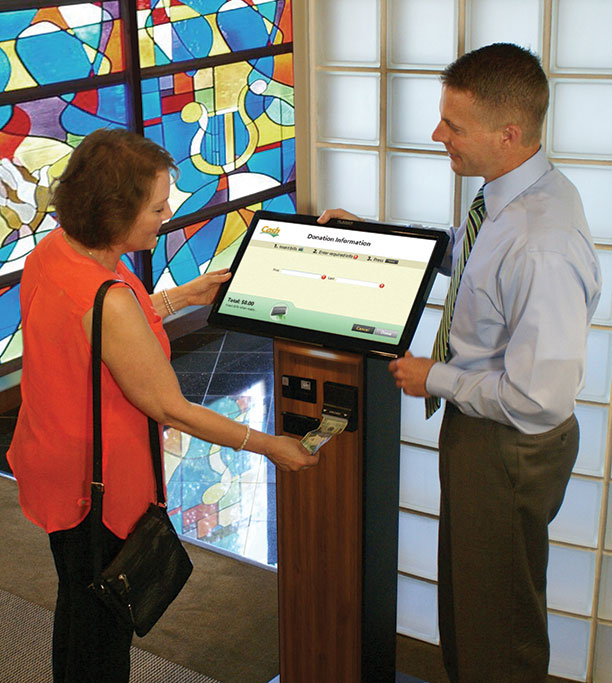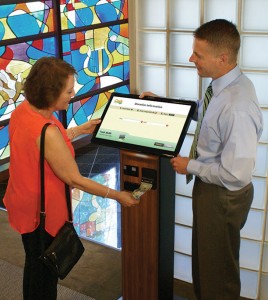

According to the most recent Church Executive Reader Survey, 93 percent of churches still offer giving by offering envelope and collection basket.
Meanwhile, only 18 percent of churches offer giving kiosks on their campuses.
Perhaps the reason is because pastors and administrators aren’t wholly familiar with the ins and outs of this new-school giving tool.
Here, Doug Braun, senior vice president of inLighten (Clarence, NY) walks us through the most compelling reasons to consider a giving kiosk.
Reduced administrative costs
Giving kiosks electronically capture, record and report details of each transaction made.
Compatible software often allows churches to accept anonymous donations or to require specific information (name, address, phone, e-mail and so on), which can supplement or update the church’s existing member information files. In the case of givers who aren’t church members, this information can be compiled and used for outreach purposes.
Donation information can easily be exported for integration with the congregation’s church management software. (In the case of inLighten’s iGive kiosk, compatibility isn’t restricted to a single management software option; it allows broader utility by making data available in common formats, such as Excel or ASCII files.) The collected giving data can be easily reconciled, saving time and minimizing human error.
Additional advantages — event registration and special purchase capabilities, for instance — can be tracked, recorded and reported. Attendee lists, or lists for distribution of purchased items, can be output.
More effective budget planning
A kiosk’s data collecting and reporting capabilities enable a church to plot giving by date, making it easier to understand seasonal giving patterns.
Dates can be aligned with activities to highlight those that prompt the most free-will giving. Churches can also analyze events attended by the wider public that result in the greatest non-member or visitor donations. This allows forecasting of annual, quarterly and monthly donation totals, as well as projection of period-to-period cash flow.
Using reports with detailed giving information (by individual member or donor unit), annual stewardship campaigns, capital campaigns and other special fundraising initiatives can be more effectively and productively managed.
Member-friendly benefits
A kiosk gives members a variety of payment options in a single, user-friendly device. Cash, check or credit / debit cards are all options, as are online payment solutions.
Moreover, gifts can be allocated towards specific stewardship pledges, special funds or campaigns.
For members’ convenience, kiosks generate paper or e-mail receipts for givers’ own records.
— Reporting by RaeAnn Slaybaugh


